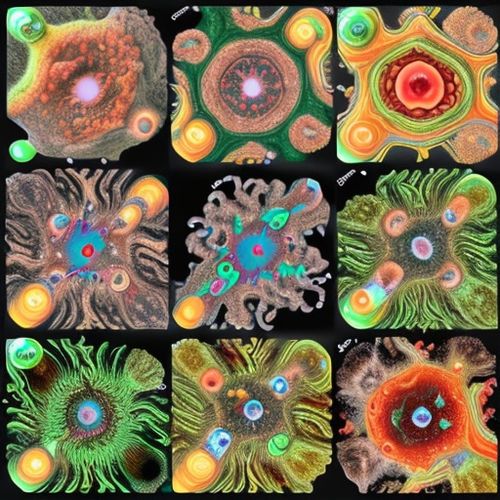Researchers have unveiled a groundbreaking advancement in the detection of telomerase activity, a critical enzyme linked to aging and cancer. A newly developed probe promises to revolutionize how scientists measure and understand telomerase behavior, offering higher sensitivity and specificity than existing methods. This innovation could pave the way for earlier cancer diagnostics and more accurate monitoring of cellular aging processes.
The probe, designed by a team of biochemists and nanotechnology experts, utilizes a unique combination of fluorescent markers and nucleotide analogs to detect telomerase activity in real-time. Unlike traditional assays that require complex sample preparation or produce inconsistent results, this new approach provides a streamlined and reliable measurement system. Early tests have shown remarkable accuracy in distinguishing between healthy cells and cancerous ones based on telomerase activity levels.
How the New Probe Works
At the core of this innovation lies a sophisticated molecular design that specifically targets the telomerase elongation process. The probe incorporates specially modified nucleotides that emit fluorescent signals only when incorporated by telomerase into growing telomeres. This mechanism allows researchers to visualize and quantify telomerase activity with unprecedented precision, even in small cell populations or single-cell analyses.
The detection system operates through a two-step process: first, the probe binds to the active site of telomerase, and then it emits a measurable signal as the enzyme extends telomeric DNA. This real-time monitoring capability represents a significant improvement over endpoint detection methods, enabling researchers to observe dynamic changes in telomerase activity throughout the cell cycle.
Potential Clinical Applications
Medical researchers are particularly excited about the probe's potential applications in oncology. Telomerase activity is a hallmark of approximately 90% of human cancers, making it an attractive target for both diagnosis and treatment monitoring. With this new detection method, clinicians might soon be able to identify cancerous cells at earlier stages than currently possible, potentially improving patient outcomes through timely intervention.
Beyond cancer diagnostics, the probe could enhance research into age-related diseases and cellular senescence. Scientists studying the biology of aging could use this tool to better understand how telomerase activity changes throughout an organism's lifespan and how these changes correlate with various health outcomes. This might lead to new strategies for promoting healthy aging or developing anti-aging therapies.
Overcoming Previous Limitations
Traditional telomerase detection methods, such as the TRAP assay, have served researchers well but come with significant limitations. These include requirements for large cell numbers, susceptibility to inhibitors in cell lysates, and inability to provide real-time data. The new probe addresses all these shortcomings while adding the capability for spatial resolution within cells.
One particularly innovative aspect is the probe's resistance to degradation by cellular nucleases, which has been a persistent challenge in developing sensitive detection systems. The research team achieved this through strategic chemical modifications to the probe's structure, allowing it to remain stable in biological environments long enough to produce reliable measurements.
Future Directions and Commercialization
While the initial results are promising, the research team emphasizes that further validation studies are needed before the probe can be widely adopted. They are currently working on optimizing the probe for different tissue types and developing standardized protocols for clinical applications. Several biotechnology companies have already expressed interest in licensing the technology, suggesting rapid translation from lab to clinic may be possible.
Looking ahead, the scientists envision adapting the probe for use in high-throughput screening of potential telomerase-modulating drugs. This could accelerate the development of new cancer therapeutics that target telomerase activity specifically in malignant cells while sparing healthy ones. Such targeted approaches might reduce the side effects commonly associated with conventional cancer treatments.
The development of this novel telomerase activity probe represents a significant milestone in molecular diagnostics and cellular biology research. As the technology matures and becomes more widely available, it could transform our understanding of fundamental biological processes while providing clinicians with powerful new tools for disease detection and management.

By Thomas Roberts/Apr 19, 2025

By Michael Brown/Apr 19, 2025

By Victoria Gonzalez/Apr 19, 2025

By Benjamin Evans/Apr 19, 2025

By Eric Ward/Apr 19, 2025

By Emily Johnson/Apr 19, 2025

By David Anderson/Apr 19, 2025

By Olivia Reed/Apr 19, 2025

By Emma Thompson/Apr 19, 2025

By William Miller/Apr 19, 2025

By Laura Wilson/Apr 19, 2025

By Emma Thompson/Apr 19, 2025

By John Smith/Apr 19, 2025

By John Smith/Apr 19, 2025

By James Moore/Apr 19, 2025

By Michael Brown/Apr 19, 2025

By John Smith/Apr 19, 2025

By Noah Bell/Apr 19, 2025

By Emma Thompson/Apr 19, 2025

By Benjamin Evans/Apr 19, 2025